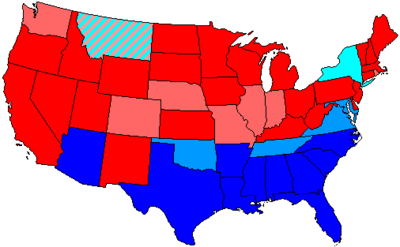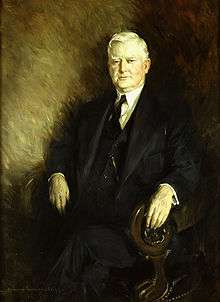71st United States Congress
The 71st United States Congress was a meeting of the legislative branch of the United States federal government, consisting of the United States Senate and the United States House of Representatives. It met in Washington, D.C. from March 4, 1929, to March 4, 1931, during the first two years of Herbert Hoover's presidency. The apportionment of seats in the House of Representatives was based on the Thirteenth Decennial Census of the United States in 1910. Both chambers had a Republican majority. This congress saw the most special elections of any congress with 27 in all.
| 71st United States Congress | |
|---|---|
70th ← → 72nd | |
 United States Capitol (1906) | |
| March 4, 1929 – March 4, 1931 | |
| Senate President | Charles Curtis (R) |
| Senate President pro tem | George H. Moses (R) |
| House Speaker | Nicholas Longworth (R) |
| Members | 96 senators 435 members of the House 5 non-voting delegates |
| Senate Majority | Republican |
| House Majority | Republican |
| Sessions | |
| Special: March 4, 1929 – March 5, 1929 1st: April 15, 1929 – November 22, 1929 2nd: December 2, 1929 – July 3, 1930 Special: July 7, 1930 – July 21, 1930 3rd: December 1, 1930 – March 3, 1931 | |
Major events
- March 4, 1929: Herbert C. Hoover became President of the United States
- October 24, 1929 – October 29, 1929: Wall Street Crash of 1929: Three multi-digit percentage drops wipe out more than $30 billion from the New York Stock Exchange (3 times greater than the annual budget of the federal government).
- October 25, 1929: Former U.S. Interior Secretary Albert B. Fall is convicted of bribery for his role in the Teapot Dome scandal, becoming the first Presidential cabinet member to go to prison for actions in office.
Major legislation
- June 15, 1929: Agriculture Marketing Act, ch. 24, 46 Stat. 11
- June 18, 1929: Reapportionment Act of 1929, ch. 28, 46 Stat. 21
- May 14, 1930: Federal Bureau of Prisons Act, ch. 274, 46 Stat. 325
- June 17, 1930: Hawley-Smoot Tariff Act, ch. 497, 46 Stat. 590, (including: Title III, Plant Patent Act, 46 Stat. 703)
- July 3, 1930: Veterans Administration Act, ch. 863, 46 Stat. 1016
- March 3, 1931: Davis–Bacon Act, ch. 411, 46 Stat. 1494
- March 3, 1931: An Act To make The Star-Spangled Banner the national anthem of the United States of America, ch. 436, 46 Stat. 1508
Party summary
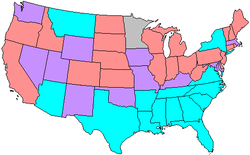
The count below identifies party affiliations at the beginning of the first session of this Congress, and includes members from vacancies and newly admitted states, when they were first seated. Changes resulting from subsequent replacements are shown below in the "Changes in membership" section.
Senate
| Party (shading shows control) |
Total | Vacant | |||
|---|---|---|---|---|---|
| Democratic (D) |
Farmer– Labor (FL) | Republican (R) | |||
| End of previous congress | 45 | 1 | 49 | 95 | 1 |
| Begin | 39 | 1 | 54 | 94 | 2 |
| End | 42 | 53 | 96 | 0 | |
| Final voting share | 43.8% | 1.0% | 55.2% | ||
| Beginning of next congress | 46 | 1 | 48 | 95 | 1 |
House of Representatives
| Party (shading shows control) |
Total | Vacant | ||||
|---|---|---|---|---|---|---|
| Democratic (D) |
Farmer– Labor (FL) | Republican (R) | Other | |||
| End of previous congress | 193 | 2 | 232 | 1[lower-alpha 1] | 428 | 7 |
| Begin | 164 | 1 | 268 | 0 | 433 | 2 |
| End | 166 | 265 | 432 | 3 | ||
| Final voting share | 38.4% | 0.2% | 61.3% | 0.0% | ||
| Beginning of next congress | 216 | 1 | 217 | 0 | 434 | 1 |
Leadership
Senate

Charles Curtis
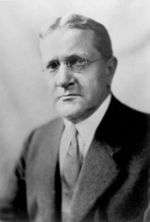
George H. Moses
- President: Charles Curtis (R)
- President pro tempore: George H. Moses (R)
- Majority leader: James E. Watson (R)
- Minority leader: Joseph T. Robinson (D)
- Majority whip: Simeon D. Fess (R)
- Minority whip: Morris Sheppard (D)
- Republican Conference Secretary: Frederick Hale
- Democratic Caucus Secretary: Hugo Black
House of Representatives
- Speaker: Nicholas Longworth (R)
- Majority leader: John Q. Tilson (R)
- Minority leader: John N. Garner (D)
- Minority Whip: Albert Henry Vestal (R)
- Minority Whip: John McDuffie (D)
- Republican Conference Chair: Willis C. Hawley
- Democratic Caucus Chairman: David Hayes Kincheloe
- Democratic Campaign Committee Chairman: Joseph W. Byrns Sr.
- Republican Campaign Committee Chairman: William R. Wood
Members
This list is arranged by chamber, then by state. Senators are listed in order of seniority, and Representatives are listed by district.
Senate
Senators were elected every two years, with one-third beginning new six-year terms with each Congress. Preceding the names in the list below are Senate class numbers, which indicate the cycle of their election. In this Congress, Class 1 meant their term began in this Congress, requiring reelection in 1934; Class 2 meant their term ended with this Congress, requiring reelection in 1930; and Class 3 meant their term began in the last Congress, requiring reelection in 1932.
Alabama
Arizona
Arkansas
California
Colorado
Connecticut
Delaware
Florida
Georgia
Idaho
Illinois
Indiana
Iowa
Kansas
Kentucky
Louisiana
Maine
Maryland
Massachusetts
Michigan
Minnesota
Mississippi
Missouri
Montana
Nebraska
|
Nevada
New Hampshire
New Jersey
New Mexico
New York
North Carolina
North Dakota
Ohio
Oklahoma
Oregon
Pennsylvania
Rhode Island
South Carolina
South Dakota
Tennessee
Texas
Utah
Vermont
Virginia
Washington
West Virginia
Wisconsin
Wyoming
|
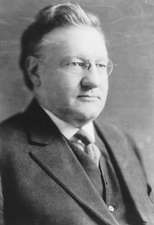 Senate Majority leader James E. Watson 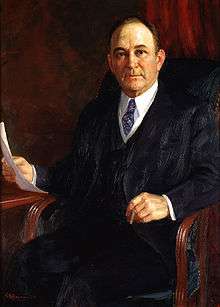 Senate Minority leader Joseph T. Robinson
|
House of Representatives
The names of members of the House of Representatives are preceded by their districts.
Changes in membership
The count below reflects changes from the beginning of the first session of this Congress.
Senate
- replacements: 9
- Democratic: 1-seat net gain
- Republican: 1-seat net loss
- Deaths: 5
- Resignations: 3
- Interim appointments: 6
- Total seats with changes: 9
| State | Senator | Reason for Vacancy | Successor | Date of Successor's Installation |
|---|---|---|---|---|
| Kansas (3) |
Vacant | Charles Curtis (R) had resigned at end of previous congress to become Vice President of the United States. Successor appointed April 1, 1929, to continue the term. Successor later lost nomination to finish the term, see below. |
Henry J. Allen (R) | April 1, 1929 |
| Pennsylvania (3) |
Vacant | Sen.-elect William S. Vare (R) was apparently elected but vote was never certified by the Governor due to election irregularities. The Senate refused to qualify him and he was formally unseated December 9, 1929. Successor appointed December 11, 1929. Successor later lost nomination to finish the term, see below. |
Joseph R. Grundy (R) | December 11, 1929 |
| Tennessee (2) |
Lawrence Tyson (D) | Died August 24, 1929. Successor appointed September 2, 1929, to continue the term. Successor was also later elected November 4, 1930, to finish the term.[2] |
William E. Brock (D) | September 2, 1929 |
| Ohio (3) |
Theodore E. Burton (R) | Died October 28, 1929. Successor appointed November 5, 1929, to continue the term. Successor later lost election to finish the term, see below. |
Roscoe C. McCulloch (R) | November 5, 1929 |
| New Jersey (2) |
Walter E. Edge (R) | Resigned November 21, 1929, to become U.S. Ambassador to France. Successor appointed November 30, 1929, to continue the term. Successor later did not run to finish the term, see below. |
David Baird, Jr. (R) | November 30, 1929 |
| Wyoming (2) |
Francis E. Warren (R) | Died November 24, 1929. Successor appointed December 5, 1929. Successor later did not run to finish the term, see below. |
Patrick J. Sullivan (R) | December 5, 1929 |
| Kentucky (2) |
Frederic M. Sackett (R) | Resigned January 9, 1930, to become U.S. Ambassador to Germany. Successor appointed January 11, 1930, to continue the term. Successor later lost election to finish the term, see below. |
John M. Robsion (R) | January 11, 1930 |
| Wyoming (2) |
Patrick Joseph Sullivan (R) | Interim appointee did not run to finish the term. Successor elected November 4, 1930. |
Robert D. Carey (R) | December 1, 1930 |
| Kansas (3) |
Henry J. Allen (R) | Interim appointee lost election to finish the term. Successor elected November 4, 1930. |
George McGill (D) | December 1, 1930 |
| Kentucky (2) |
John M. Robsion (R) | Interim appointee lost election to finish the term. Successor elected November 4, 1930. |
Ben M. Williamson (D) | December 1, 1930 |
| Ohio (3) |
Roscoe C. McCulloch (R) | Interim appointee lost election to finish the term. Successor elected November 4, 1930. |
Robert J. Bulkley (D) | December 1, 1930 |
| Pennsylvania (3) |
Joseph R. Grundy (R) | Interim appointee lost nomination to finish the term. Successor elected November 4, 1930. |
James J. Davis (R) | December 2, 1930 |
| New Jersey (2) |
David Baird, Jr. (R) | Interim appointee did not run to finish the term. Successor elected November 4, 1930. |
Dwight Morrow (R) | December 3, 1930 |
| North Carolina (3) |
Lee S. Overman (D) | Died December 12, 1930. Successor appointed December 13, 1930, to continue the term. Successor later lost election to finish the term, see (72nd United States Congress). |
Cameron A. Morrison (D) | December 13, 1930 |
| Vermont (1) |
Frank L. Greene (R) | Died December 17, 1930. Successor appointed December 23, 1930, to continue the term. Successor later lost nomination to finish the term, see (72nd United States Congress). |
Frank C. Partridge (R) | December 23, 1930 |
House of Representatives
- replacements: 27
- Democratic: 4 seat net gain
- Republican: 3 seat net loss
- deaths: 25
- resignations: 6
- contested election: 1
- Total seats with changes: 32
| District | Vacator | Reason for Vacancy | Successor | |
|---|---|---|---|---|
| New York 21st | Vacant | Rep. Royal H. Weller died during previous congress | Joseph A. Gavagan (D) | November 5, 1929 |
| Illinois 15th | Vacant | Rep. Edward J. King died in previous congress | Burnett M. Chiperfield (R) | November 4, 1930 |
| Kentucky 3rd | Charles W. Roark (R) | Died April 5, 1929 | John W. Moore (D) | June 1, 1929 |
| Louisiana 3rd | Whitmell P. Martin (D) | Died April 6, 1929 | Numa F. Montet (D) | August 6, 1929 |
| Pennsylvania 12th | John J. Casey (D) | Died May 5, 1929 | Charles M. Turpin (R) | June 1, 1929 |
| Minnesota 5th | Walter Newton (R) | Resigned June 30, 1929, after being appointed secretary to President Herbert Hoover | William I. Nolan (R) | July 17, 1929 |
| Georgia 5th | Leslie J. Steele (D) | Died July 24, 1929 | Robert Ramspeck (D) | October 2, 1929 |
| Minnesota 7th | Ole J. Kvale (FL) | Died September 11, 1929 | Paul J. Kvale (FL) | October 16, 1929 |
| New York 18th | John F. Carew (D) | Resigned December 28, 1929, after being appointed a justice to the New York Supreme Court | Martin J. Kennedy (D) | April 11, 1930 |
| Illinois 24th | Thomas S. Williams (R) | Resigned November 11, 1929, after being appointed to the United States Court of Claims | Claude V. Parsons (D) | November 4, 1930 |
| Pennsylvania 10th | William W. Griest (R) | Died December 5, 1929 | J. Roland Kinzer (R) | January 28, 1930 |
| Massachusetts 2nd | Will Kirk Kaynor (R) | Died December 20, 1929 | William J. Granfield (D) | February 17, 1930 |
| Utah 2nd | Elmer O. Leatherwood (R) | Died December 24, 1929 | Frederick C. Loofbourow (R) | November 4, 1930 |
| Kentucky 11th | John M. Robsion (R) | Resigned January 10, 1930, after being appointed to the U.S. Senate | Charles Finley (R) | February 15, 1930 |
| Texas 14th | Augustus McCloskey (D) | Lost contested election February 10, 1930 | Harry M. Wurzbach (R) | February 10, 1930 |
| West Virginia 4th | James A. Hughes (R) | Died March 2, 1930 | Robert L. Hogg (R) | November 4, 1930 |
| Connecticut 5th | James P. Glynn (R) | Died March 6, 1930 | Edward W. Goss (R) | November 4, 1930 |
| Texas 17th | Robert Q. Lee (D) | Died April 18, 1930 | Thomas L. Blanton (D) | May 20, 1930 |
| Rhode Island 3rd | Jeremiah E. O'Connell (D) | Resigned May 9, 1930, after being appointed a justice to the Rhode Island Superior Court | Francis Condon (D) | November 4, 1930 |
| Wisconsin 6th | Florian Lampert (R) | Died July 18, 1930 | Michael Reilly (D) | November 4, 1930 |
| Pennsylvania 32nd | Edgar R. Kiess (R) | Died July 20, 1930 | Robert F. Rich (R) | November 4, 1930 |
| Pennsylvania 16th | Stephen G. Porter (R) | Died June 27, 1930 | Edmund F. Erk (R) | November 4, 1930 |
| North Carolina 5th | Charles M. Stedman (D) | Died September 23, 1930 | Franklin W. Hancock, Jr. (D) | November 4, 1930 |
| North Carolina 7th | William C. Hammer (D) | Died September 26, 1930 | Hinton James (D) | November 4, 1930 |
| Kentucky 2nd | David H. Kincheloe (D) | Resigned October 5, 1930, after being appointed to the United States Customs Court | John L. Dorsey, Jr. (D) | November 4, 1930 |
| California 3rd | Charles F. Curry (R) | Died October 10, 1930 | Seat remained vacant until next Congress | |
| Arkansas 4th | Otis Wingo (D) | Died October 21, 1930 | Effiegene Locke Wingo (D) | November 4, 1930 |
| New York 7th | John Quayle (D) | Died November 27, 1930 | Seat remained vacant until next Congress | |
| New York 9th | David J. O'Connell (D) | Died December 29, 1930 | Stephen A. Rudd (D) | February 17, 1931 |
| Wisconsin 1st | Henry A. Cooper (R) | Died March 1, 1931 | Seat remained vacant until next Congress | |
Committees
Lists of committees and their party leaders, for members (House and Senate) of the committees and their assignments, go into the Official Congressional Directory at the bottom of the article and click on the link, in the directory after the pages of terms of service, you will see the committees of the Senate, House (Standing with Subcommittees, Select and Special) and Joint and after the committee pages, you will see the House/Senate committee assignments in the directory, on the committees section of the House and Senate in the Official Congressional Directory, the committee's members on the first row on the left side shows the chairman of the committee and on the right side shows the ranking member of the committee.
Joint committees
Caucuses
OfficersLegislative branch agency directorsSenate
House of Representatives
See also
Notes
References
External links
|
